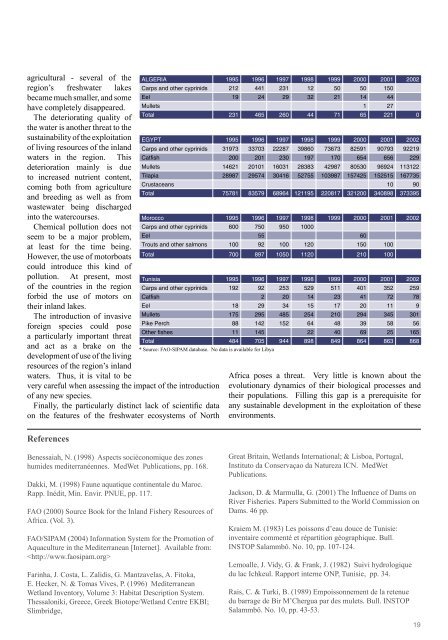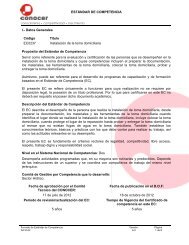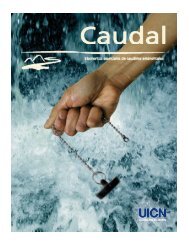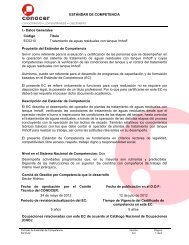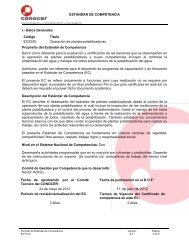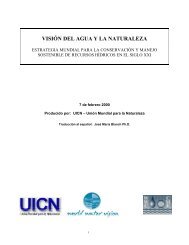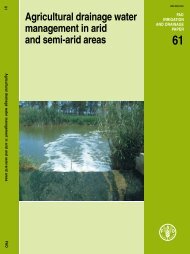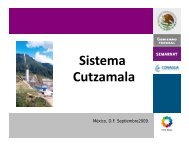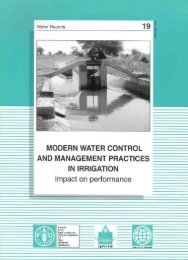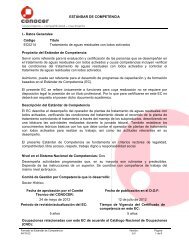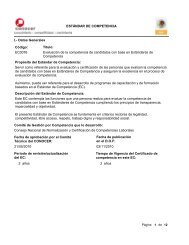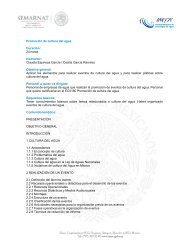The Conservation and Sustainable Use of Freshwater ... - IUCN
The Conservation and Sustainable Use of Freshwater ... - IUCN
The Conservation and Sustainable Use of Freshwater ... - IUCN
Create successful ePaper yourself
Turn your PDF publications into a flip-book with our unique Google optimized e-Paper software.
agricultural - several <strong>of</strong> the<br />
region’s freshwater lakes<br />
became much smaller, <strong>and</strong> some<br />
have completely disappeared.<br />
<strong>The</strong> deteriorating quality <strong>of</strong><br />
the water is another threat to the<br />
sustainability <strong>of</strong> the exploitation<br />
<strong>of</strong> living resources <strong>of</strong> the inl<strong>and</strong><br />
waters in the region. This<br />
deterioration mainly is due<br />
to increased nutrient content,<br />
coming both from agriculture<br />
<strong>and</strong> breeding as well as from<br />
wastewater being discharged<br />
into the watercourses.<br />
Chemical pollution does not<br />
seem to be a major problem,<br />
at least for the time being.<br />
However, the use <strong>of</strong> motorboats<br />
could introduce this kind <strong>of</strong><br />
pollution. At present, most<br />
<strong>of</strong> the countries in the region<br />
forbid the use <strong>of</strong> motors on<br />
their inl<strong>and</strong> lakes.<br />
<strong>The</strong> introduction <strong>of</strong> invasive<br />
foreign species could pose<br />
a particularly important threat<br />
<strong>and</strong> act as a brake on the<br />
development <strong>of</strong> use <strong>of</strong> the living<br />
resources <strong>of</strong> the region’s inl<strong>and</strong><br />
waters. Thus, it is vital to be<br />
very careful when assessing the impact <strong>of</strong> the introduction<br />
<strong>of</strong> any new species.<br />
Finally, the particularly distinct lack <strong>of</strong> scientific data<br />
on the features <strong>of</strong> the freshwater ecosystems <strong>of</strong> North<br />
References<br />
ALGERIA 1995 1996 1997 1998 1999 2000 2001 2002<br />
Carps <strong>and</strong> other cyprinids 212 441 231 12 50 50 150<br />
Eel 19 24 29 32 21 14 44<br />
Mullets 1 27<br />
Total 231 465 260 44 71 65 221 0<br />
EGYPT 1995 1996 1997 1998 1999 2000 2001 2002<br />
Carps <strong>and</strong> other cyprinids 31973 33703 22287 39860 73673 82591 90793 92219<br />
Catfish 200 201 230 197 170 654 656 229<br />
Mullets 14621 20101 16031 28383 42987 80530 96924 113122<br />
Tilapia 28987 29574 30416 52755 103987 157425 152515 167735<br />
Crustaceans 10 90<br />
Total 75781 83579 68964 121195 220817 321200 340898 373395<br />
Morocco 1995 1996 1997 1998 1999 2000 2001 2002<br />
Carps <strong>and</strong> other cyprinids 600 750 950 1000<br />
Eel 55 60<br />
Trouts <strong>and</strong> other salmons 100 92 100 120 150 100<br />
Total 700 897 1050 1120 210 100<br />
Tunisia 1995 1996 1997 1998 1999 2000 2001 2002<br />
Carps <strong>and</strong> other cyprinids 192 92 253 529 511 401 352 259<br />
Catfish 2 20 14 23 41 72 78<br />
Eel 18 29 34 15 17 20 11 9<br />
Mullets 175 295 485 254 210 294 345 301<br />
Pike Perch 88 142 152 64 48 39 58 56<br />
Other fishes 11 145 22 40 69 25 165<br />
Total 484 705 944 898 849 864 863 868<br />
* Source: FAO-SIPAM database. No data is available for Libya<br />
Africa poses a threat. Very little is known about the<br />
evolutionary dynamics <strong>of</strong> their biological processes <strong>and</strong><br />
their populations. Filling this gap is a prerequisite for<br />
any sustainable development in the exploitation <strong>of</strong> these<br />
environments.<br />
Benessaiah, N. (1998) Aspects sociéconomique des zones<br />
humides mediterranéennes. MedWet Publications, pp. 168.<br />
Dakki, M. (1998) Faune aquatique continentale du Maroc.<br />
Rapp. Inédit, Min. Envir. PNUE, pp. 117.<br />
FAO (2000) Source Book for the Inl<strong>and</strong> Fishery Resources <strong>of</strong><br />
Africa. (Vol. 3).<br />
FAO/SIPAM (2004) Information System for the Promotion <strong>of</strong><br />
Aquaculture in the Mediterranean [Internet]. Available from:<br />
<br />
Farinha, J. Costa, L. Zalidis, G. Mantzavelas, A. Fitoka,<br />
E. Hecker, N. & Tomas Vives, P. (1996) Mediterranean<br />
Wetl<strong>and</strong> Inventory, Volume 3: Habitat Description System.<br />
<strong>The</strong>ssaloniki, Greece, Greek Biotope/Wetl<strong>and</strong> Centre EKBI;<br />
Slimbridge,<br />
Great Britain, Wetl<strong>and</strong>s International; & Lisboa, Portugal,<br />
Instituto da Conservaçao da Natureza ICN. MedWet<br />
Publications.<br />
Jackson, D. & Marmulla, G. (2001) <strong>The</strong> Influence <strong>of</strong> Dams on<br />
River Fisheries. Papers Submitted to the World Commission on<br />
Dams. 46 pp.<br />
Kraiem M. (1983) Les poissons d’eau douce de Tunisie:<br />
inventaire commenté et répartition géographique. Bull.<br />
INSTOP Salammbô. No. 10, pp. 107-124.<br />
Lemoalle, J. Vidy, G. & Frank, J. (1982) Suivi hydrologique<br />
du lac Ichkeul. Rapport interne ONP, Tunisie, pp. 34.<br />
Rais, C. & Turki, B. (1989) Empoissonnement de la retenue<br />
du barrage de Bir M’Chergua par des mulets. Bull. INSTOP<br />
Salammbô. No. 10, pp. 43-53.<br />
19


